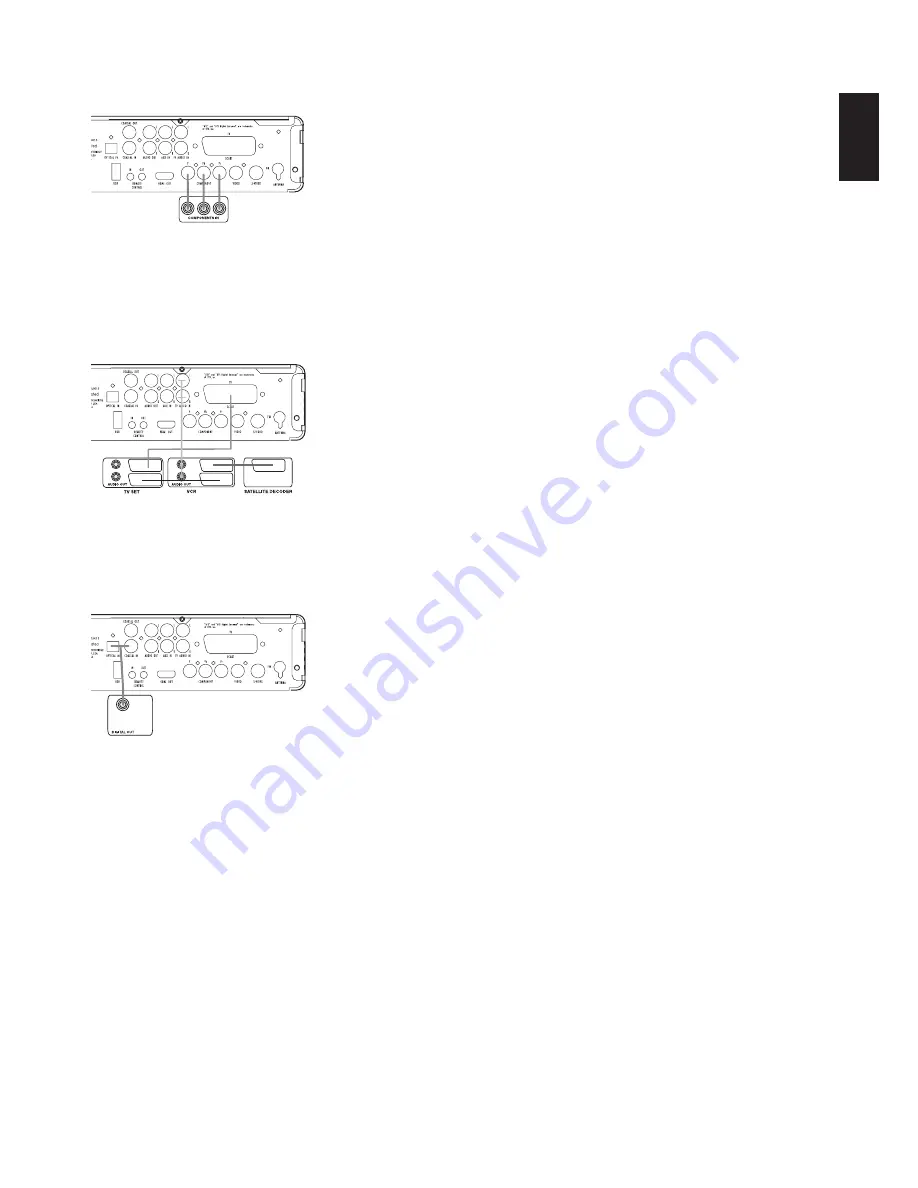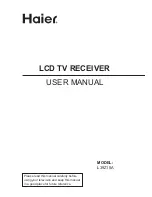
Connecting VCR and Sat Decoder (Methods 5 and 6)
The diagram below shows possible connection methods for
common system configurations. These are intended as guidelines
only. Due to differences in equipment specifications, the method of
connection for your equipment may be different from that shown.
Please consult the owner’s manual for your equipment for further
guidance.
Connecting Set-Top Box or Digital Satellite Receiver (Method 7) –
Using Coaxial Digital Cable
To listen to the digital multichannel signal or downmix from set-top
boxes or digital satellite receivers, connect the Coaxial Digital Out
of your device to the
Coaxial Digital In
8
on the CS receiver.
Optional Audio Connections
Aux Input for External Source
You may connect a line-level stereo analog audio source such as a
Sat receiver, tape deck, phono preamp of a record player, etc., to
the receiver’s rear-panel
Audio In Input
6
sockets to enjoy the
benefits of your CS system with other source components.
• VCR Connection-Audio (cables not Included): To listen to the
sound from your stereo VCR through the speakers of this system,
connect the Left/Right audio output jacks of your stereo VCR to
the Left/Right audio input jacks
Audio In
6
of this system.
Aux Output for Recording
To record the sound of the CS system with your VCR or any audio
recording device (tape deck, MD, CDR and some others), the
Audio
Out Jacks
A
should be connected to the analog Record In jacks of
the appropriate device. They can also be connected to any audio
input on your TV to listen to the sound of your CS receiver through
the speakers of your TV only, when the amp in your subwoofer is
turned off and the volume of the CS receiver has been turned down
completely. If the speakers of your CS system are active, the
volume on your TV should be turned down.
Digital In- and Outputs
Connect the digital output of any digital sources such as an
optional CD or DVD changer or player, advanced video game, a
digital satellite receiver, HDTV tuner or digital cable set-top box or
the output of a compatible computer sound card to the
Optical
and
Coaxial Digital Inputs
89
.
Connect the
Coaxial Digital Output
E
on the rear panel of the CS to
the matching digital input connections on a CD-R or MiniDisc recorder.
Note (When Connecting the Optical Digital Audio Cable – Optional):
Gently push the cable plug through the built-in shutter that covers
the optical digital audio output and connect the cable firmly so that
the configurations of both the cable and the connector match.
Speaker Placement
The placement of speakers in a multichannel home theater system
can have a noticeable impact on the quality of sound reproduced.
Depending on your viewing device, place the center speaker either
directly above or below your TV, or in the center behind a
perforated front-projection screen.
Once the center channel speaker is installed, position the left-front
and right-front speakers so that they are as far away from one
another as the center channel speaker is from the preferred
listening position. Ideally, the front-channel speakers should be
placed so that their tweeters are no more than 60cm above or
below the tweeter in the center channel speaker.
Depending on the specifics of your room acoustics, you may find
that imaging is improved by moving the front-left and front-right
speakers slightly forward of the center channel speaker. If possi-
ble, adjust all front loudspeakers so that they are aimed at ear
height when you are seated in the listening position.
Using these guidelines, you’ll find that it takes some experimenta-
tion to find the correct location for the front speakers in your
particular installation. Don’t be afraid to move things around until
the system sounds correct. Optimize your speakers so that audio
transitions across the front of the room sound smooth.
When the CS is used in 5.1-channel operation, the preferred
location for surround speakers is on the side walls of the room, at
or slightly behind the listening position.
15
English
INSTALLATION AND CONNECTIONS
















































